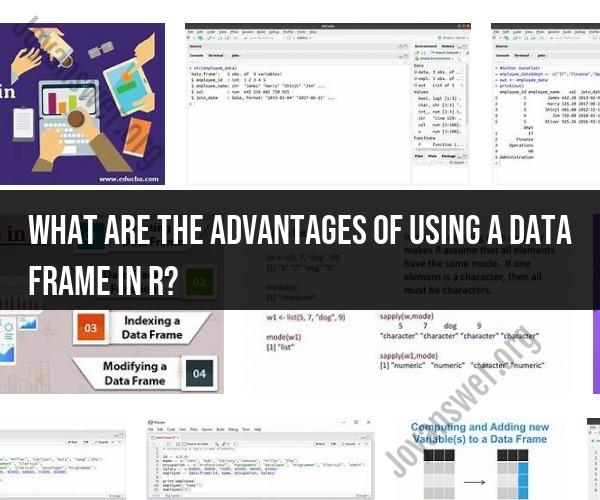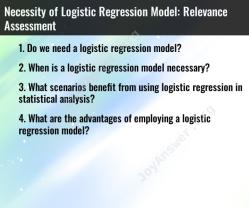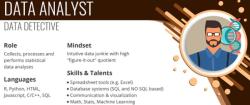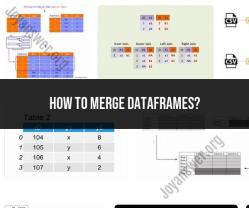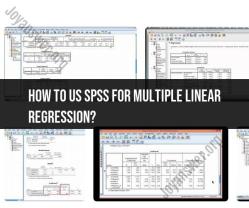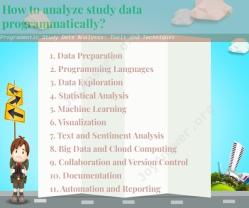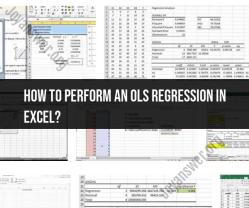What are the advantages of using a data frame in R?
Data frames are a fundamental data structure in R, and they offer several advantages, making them a powerful tool for data manipulation and analysis. Here are some of the key advantages of using data frames in R:
Tabular Structure: Data frames organize data in a tabular format, similar to a spreadsheet or database table. This tabular structure allows for easy representation and interpretation of data.
Mixed Data Types: Data frames can accommodate columns with different data types (e.g., numeric, character, factor, logical). This flexibility is essential when working with real-world datasets, which often contain a mix of data types.
Easy Data Import: R provides various functions to read data from different file formats (e.g., CSV, Excel, databases) into data frames. This simplifies the process of importing external data into your R environment.
Subset and Filtering: Data frames allow you to easily subset and filter data based on specific conditions. You can select rows and columns of interest, which is crucial for data exploration and analysis.
Data Cleaning: Data frames enable you to perform data cleaning tasks efficiently. You can handle missing values, duplicate records, and outliers, ensuring that your data is ready for analysis.
Statistical Analysis: R provides a wide range of statistical and analytical functions that can be applied directly to data frames. You can calculate summary statistics, perform hypothesis tests, and run regression models on data frames.
Data Visualization: You can use R's powerful data visualization libraries (e.g., ggplot2) to create informative plots and charts directly from data frames. Visualizations help in understanding and presenting your data effectively.
Integration with Packages: Many R packages are designed to work seamlessly with data frames. These packages provide specialized functions for tasks like time series analysis, machine learning, and geospatial analysis.
Compatibility: Data frames are compatible with other R data structures, such as lists and matrices. This compatibility makes it easy to combine data frames with other R objects when needed.
Interoperability: R can interface with various data storage systems, databases, and big data platforms. Data frames serve as a common interface for working with data from different sources.
Data Export: After analysis, you can easily export your results, including summary statistics, plots, or transformed data, back to various file formats using R's export functions.
Reproducibility: Data frames are essential for creating reproducible research in R. You can document your data cleaning and analysis steps, making it easier for others to understand and replicate your work.
Overall, data frames in R provide a structured and versatile way to manage and analyze data, making R a popular choice for data scientists, statisticians, and analysts in various fields.
